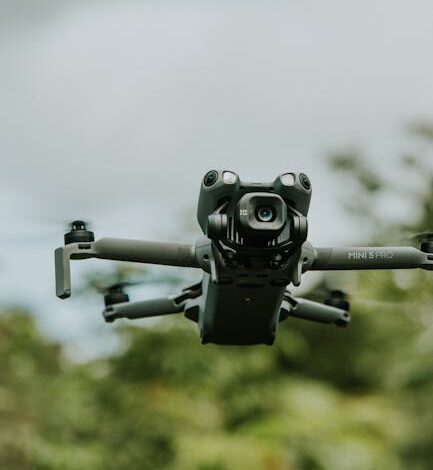Demystifying the “AI Genius” Myth

Remember that feeling when you first heard terms like “neural networks,” “deep learning,” or “support vector machines”? For me, it wasn’t excitement; it was a wave of genuine intimidation. I was fresh out of a master’s program, armed with a degree that supposedly prepped me for the future, yet these phrases made machine learning sound like an exclusive club for certified geniuses. “This,” I thought, “isn’t for people like me.”
Fast forward a few years, and I’m now navigating the world as a data analyst and machine learning practitioner. It wasn’t a sudden epiphany or a secret key to understanding; it was a slow, deliberate process of picking up pieces, making mistakes, and persistently putting one foot in front of the other. My journey didn’t start with inherent confidence or a stroke of brilliance. It started, quite simply, with Google.
If you’re reading this, gazing at the vast landscape of AI and wondering if you can truly cross that chasm, the answer is a resounding yes. This isn’t a story about magic; it’s a story about method, patience, and a whole lot of curiosity. It’s the story I wish someone had told me when I was just beginning to feel that familiar twinge of self-doubt. So, let’s talk about how I did it, and how you can, too.
Demystifying the “AI Genius” Myth
The biggest hurdle to learning machine learning isn’t the math, the code, or the complex algorithms. It’s the perception that you need to be a math prodigy or a coding savant to even begin. I know this intimately because I held that belief for far too long. Despite my “fancy” master’s degree, none of the early steps felt easy. This experience taught me a fundamental truth: academic credentials, while valuable, aren’t what make machine learning click. Curiosity, practice, and patience are.
When those initial, daunting terms like “neural networks” first surfaced, they felt like a foreign language spoken by an elite few. The layers of complexity, the mathematical notation, the sheer volume of information — it all seemed designed to keep outsiders out. But what I discovered, brick by painstaking brick, was that behind the intimidating jargon lay concepts that, when broken down, were surprisingly intuitive and grounded in logic.
My journey wasn’t about suddenly “getting it.” It was about a consistent willingness to not get it, to fail, to try again, and to gradually build a mosaic of understanding. The path to becoming a machine learning practitioner isn’t paved with innate brilliance; it’s forged by persistent effort, an open mind, and a relentless desire to unravel puzzles. If you can bring those qualities to the table, you’re already more than halfway there.
The Unconventional Path: Starting with the “Why,” Not the “How”
One of the most valuable lessons I learned was that you shouldn’t start by trying to build a complex AI model. Before I ever wrote a single line of Python code, before I tinkered with libraries, I had to understand something far more basic: what was I even asking the machine to do? My starting point wasn’t the model itself, but the world around the model, the context, the data, and the problem I hoped to solve.
This meant revisiting basic math. Not the kind of advanced calculus that might appear in a PhD thesis, but foundational concepts: how averages work, what probability truly signifies, and how to identify patterns within numbers. These simple things, often overlooked in the rush to code, were the bedrock. It was when I started getting curious about data — truly curious about what stories it held — that things began to click. It revealed that machine learning isn’t just about algorithms; it’s about understanding information.
Think of it like learning to cook.
You don’t start your culinary journey attempting a Michelin-star recipe from a renowned chef. You begin with the fundamentals: how to boil an egg, make toast, or sauté some vegetables. You’ll burn things, overcook others, and make a mess, but with each attempt, you learn. Each small ingredient, each simple technique, builds your confidence and skill. Python, for me, became my first kitchen tool. I didn’t try to master every function or framework. I learned just enough to ask a question, test an idea, and see what results came back. That iterative loop — question, try, see, fix — remains the core of how I learn and build today.
Learning by Doing: Embrace the Messy Middle
The moment of truth arrived when I finally attempted to build what I now recognize as my first machine learning model. Back then, I didn’t even call it that. I was simply trying to predict if a customer would buy a particular product. I grabbed a dataset I didn’t fully understand, cobbled together some code I copied from Stack Overflow, and ran it. The accuracy score it spat out? Completely inexplicable to me at the time. Yet, it ran. And in that glorious, messy, imperfect execution, I learned something no tutorial could ever convey:
The only way to truly learn machine learning is to actually do machine learning.
My approach shifted. Every project became a puzzle. If my code broke, if the results were nonsensical, I didn’t panic. I treated it as an opportunity to learn. I’d change one variable, adjust a parameter, or rewrite a snippet, then try again. I wasn’t chasing perfection in those early days; I was chasing understanding. Each failed run, each debugging session, taught me more about the underlying mechanics than any textbook ever could.
Eventually, this process led me to the “big stuff”: neural networks, computer vision, and transformer models. But it wasn’t a sudden leap. It was a series of tiny, incremental steps, each building upon the last. And with every step, I wasn’t just learning about models; I was learning how to think more critically, ask sharper questions, and debug my own assumptions. The scariest part of learning AI is always the start. But once you hit “run” on that first script and witness your code doing something, anything, it becomes incredibly addictive. You realize, “Wait. I can actually do this.”
That’s the feeling I want for you. Whether you’re a student, a professional pivoting careers, or simply curious about the gist of AI, you don’t need fancy credentials to begin. You need curiosity. You need to commit five minutes a day. And perhaps most importantly, you need to forgive yourself when you don’t grasp something the first time. Because that’s part of the process.
A Journey, Not a Destination
My journey through machine learning didn’t just teach me about algorithms and data models. It fundamentally changed how I approach complexity, empowering me to tackle challenges that once felt impossible. It also revealed a profound insight: you don’t just learn AI to become a data scientist or an ML engineer. You learn AI to become a better thinker.
So, take it slow. Break things. Ask all the “silly” questions that pop into your head. Leverage every resource you can find online, in books, and from communities. Remember, no one ever became “AI-ready” in a single weekend. But every small step you take, every time you try again, that’s you making the climb. I’m still climbing, always learning, always exploring. And so can you.





